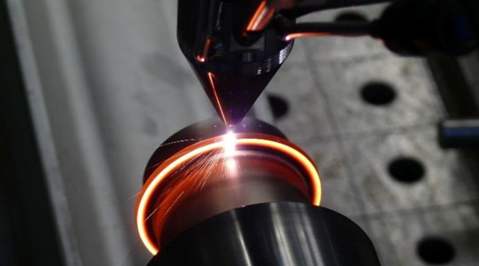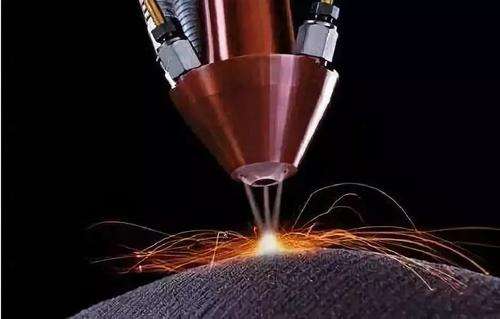Analysis of laser cladding processing technology and advantages
Laser surface modification technology mainly includes laser surface phase change hardening, laser remelting, laser alloy strengthening, laser cladding strengthening and so on.Laser cladding, also known as laser cladding, is a new surface modification technology. By adding the cladding material to the substrate surface, and using high-energy laser beam to make it melt with the substrate surface, thus forming the cladding layer combined with the matrix metallurgy.Due to the smaller dilution of the deposited layer, the excellent performance of the original deposited material is guaranteed.Base material surface after deposition will form a new composite material, it significantly enhance the surface of the base material performance, workpiece based on service environment, can be prepared by selecting different deposition materials heat resistance, corrosion resistance, abrasion resistance, oxidation resistance and fatigue resistance deposition layer surface protection, flexible and convenient, greatly reduce the manufacturing cost of the workpiece.Laser surface modification was applied to the shaft roller, auto mould, gear and other parts of protection, phase change heat treatment and surface cladding processing and repair, parts manufactured by using surface enhanced laser deposition technology is not only the performance beyond the parts of the traditional craft manufacture, at the same time because the advantage of material and processing, the production cost reduced by 20% ~ 40%, and also shorten the production cycle is about 80%.In today's environment of green remanufacturing and energy conservation and environmental protection, laser cladding will have a broad market prospect.

Laser cladding (also known as laser surfacing) refers to the technological process in which the selected coating material is placed on the coated matrix by different adding methods, and the surface of the matrix is melted and solidified rapidly after irradiation by high-energy density laser beam, so as to form the surface coating combined with metallurgy on the substrate surface.Laser cladding has the following advantages:
1) The laser beam has high energy density and high heating speed, which has little influence on the heat of the substrate and causes little deformation of the workpiece;
2) Controlling the input energy of the laser can limit the dilution effect of the substrate to a very low degree (generally 2%-8%), thus maintaining the excellent performance of the original cladding material;
3) The laser cladding coating is firmly bonded to the base material (metallurgical bonding), and the cladding coating structure is fine.Because of these characteristics, laser cladding technology has been paid much attention to the surface modification of materials in recent ten years.
There are two main methods for large area laser cladding: multi-channel lap joint and multi-layer overlay, i.e. processing from both horizontal and vertical directions.Multilayer cladding means that the first cladding is carried out on the substrate, and then secondary powder pre-cladding is carried out on the coating after cladding, and the second cladding is carried out after powder drying. In this way, multi-layer cladding can be completed, and different powders can be pre-installed on different layers to achieve different expected effects.

Laser cladding material
(1) Self-melting alloy powder: it can be divided into nickel-base self-melting gold, cobalt-base self-melting gold and iron-base self-melting gold. Its main characteristics include boron and silicon, and it has self-deoxidizing and slag-making ability, namely self-melting property.The hardness of self-fusible alloy is related to the content of boron and carbon in the alloy, and increases with the increase of the content of boron and carbon, which is caused by the increase of borides and carbides formed by boron and carbon and elements such as nickel and chromium in the alloy.
(2) Carbide composite powder system: composed of carbide hard phase and metal or alloy bonding phase, mainly including (Co, Ni)/WC and (NiCr, NiCrAl) Cr3C2 series.The bonding phase in this powder can protect the carbide from oxidation and decomposition to some extent.Carbide composite powder is a hard wear-resistant material with high hardness and good wear resistance, among which (Co, Ni)/WC system is suitable for low temperature (& LT;560℃), while (NiCr, NiCrAl)/Cr3C2 system is suitable for high temperature working environment.In addition, (Co, Ni)/WC composite powder can also be used with self-melting alloy powder.
(3) Oxide ceramic powder: with excellent high temperature heat insulation, wear resistance, corrosion resistance and other properties, mainly divided into alumina and zirconia series, and the latter has lower thermal conductivity and better thermal shock resistance than the former, so it is widely used as a thermal barrier coating material.
Product Directory